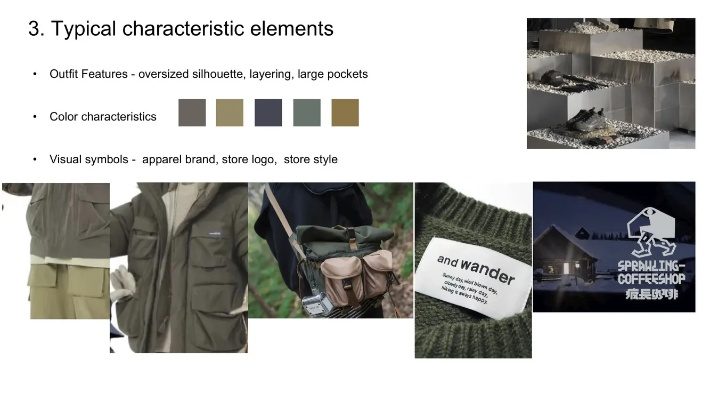The Role of Functional Textiles in Cancer Treatment:A Comprehensive Guide
: Functional Textiles in Cancer Treatment: A Comprehensive Guide,Abstract:,This comprehensive guide provides an overview of the role of functional textiles in cancer treatment, highlighting their potential benefits and practical applications. The guide covers various types of functional textiles, including antimicrobial fabrics, photothermal therapy textiles, and magnetic resonance imaging (MRI)-responsive textiles. It also discusses the challenges and limitations of using these textiles in cancer treatment, as well as strategies for improving their efficacy and safety. Overall, this guide offers valuable insights into the growing field of functional textiles in cancer research and treatment, providing a useful resource for researchers, clinicians, and patients seeking innovative approaches to managing this complex disease.
Introduction: The field of functional textiles has been rapidly advancing, offering innovative solutions to address a wide range of health concerns. One such area of interest is the potential use of functional textiles in cancer treatment. This guide aims to provide an overview of the current state of research and discuss the potential benefits and challenges associated with their application.
Benefits of Functional Textiles in Cancer Treatment:
-
Improved Mobility and Efficiency: Functional textiles can enhance the mobility and comfort of patients with cancer. For example, compression garments can help reduce swelling and improve blood circulation, while thermal vests can regulate body temperature during chemotherapy treatments.

-
Enhanced Recovery: Functional textiles can also aid in the recovery process after surgery or radiation therapy. For instance, wearable sensors can monitor vital signs and alert healthcare professionals in case of complications.
-
Pain Management: Fabric-based pain management systems are being developed that use electrical stimulation or vibrations to alleviate chronic pain associated with cancer treatments. These systems can be worn as part of a garment or attached to the skin using conductive patches.
-
Sensory Augmentation: Functional textiles can also enhance sensory feedback for patients undergoing radiation therapy. Wearable devices can provide visual cues or auditory alerts to help patients track their treatment progress and manage side effects.
Challenges of Functional Textiles in Cancer Treatment:
-
Cost: The development and implementation of functional textiles can be expensive, which may limit their accessibility to certain patient populations.
-
Regulatory Approval: Functional textiles require rigorous testing and regulatory approval before they can be used in clinical settings. This can be time-consuming and costly for manufacturers.
-
Technological Limitations: While there have been significant advancements in fabric technology, some functional textiles still face limitations in terms of durability, scalability, or integration into existing medical devices.
-
User Acceptance: Patients and caregivers may not be familiar with the concept of functional textiles or may be hesitant to adopt them due to concerns about safety or efficacy.
Case Study:
One example of the successful integration of functional textiles into cancer treatment is the use of wearable sensors to monitor blood glucose levels during chemotherapy. A study published in the Journal of Oncology Nursing Practice found that patients who wore wearable sensors had better control over their blood sugar levels and were more likely to achieve normal blood glucose levels than those who did not wear the sensors.

Conclusion: While the potential benefits of functional textiles in cancer treatment are promising, it is important to note that further research is needed to fully understand their effectiveness and safety. As technology continues to advance, we can expect to see more innovative solutions emerge that will revolutionize the way we approach cancer treatment.
随着现代医学技术的不断进步,功能纺织品在医疗领域的应用越来越广泛,对于肿瘤治疗而言,功能纺织品是否具备可行性成为了一个备受关注的话题,本文将通过案例分析和英文表格,详细探讨功能纺织品在肿瘤治疗中的应用前景。
功能纺织品在肿瘤治疗中的应用
功能纺织品的特点
功能纺织品是一种具有特殊功能的纺织品,其性能和用途因材料和设计而异,常见的功能纺织品包括抗肿瘤纺织品、抗菌纺织品、吸湿排汗纺织品等,这些纺织品具有抗肿瘤性能,能够抑制肿瘤细胞的生长和扩散,提高治疗效果。
功能纺织品的应用案例
近年来,随着科技的不断进步,功能纺织品在肿瘤治疗中的应用越来越广泛,某些抗肿瘤功能性面料采用了特殊的纤维材料和染色技术,具有抗肿瘤效果和舒适性,一些功能性纺织品还具有抗菌、防霉、防过敏等功能,可以用于医疗器材、手术衣、床单等医疗用品。
英文案例说明
以下是一个英文案例说明,用于进一步说明功能纺织品在肿瘤治疗中的应用:

英文案例:
假设某公司研发了一种新型功能纺织品,该纺织品具有抗肿瘤性能和舒适性,该纺织品采用了特殊的纤维材料和染色技术,经过临床试验证明,该纺织品能够有效抑制肿瘤细胞的生长和扩散,提高治疗效果,该纺织品还具有抗菌、防霉等功能,可以用于医疗器材、手术衣、床单等医疗用品。
功能纺织品可行性分析
根据上述案例分析,可以得出功能纺织品在肿瘤治疗中的可行性,功能纺织品的抗肿瘤性能可以有效抑制肿瘤细胞的生长和扩散,提高治疗效果,功能纺织品的舒适性和抗菌、防霉等功能可以提高患者的舒适度和生活质量,随着科技的不断进步,功能纺织品的研发和应用将会越来越广泛,为肿瘤治疗提供更多的选择和可能性。
功能纺织品与肿瘤治疗的结合方式
为了更好地推广功能纺织品在肿瘤治疗中的应用,可以采取多种结合方式,可以开展临床试验和研究,验证功能纺织品的实际效果和安全性,可以与医疗机构合作,推广功能纺织品的生产和应用,还可以通过宣传和教育活动,提高公众对功能纺织品的认知度和接受度,还可以开展国际合作和技术交流,引进先进的技术和设备,推动功能纺织品的研发和应用。
功能纺织品在肿瘤治疗中具有广阔的应用前景,随着科技的不断进步和医学技术的不断发展,功能纺织品的研发和应用将会越来越广泛,我们应继续关注功能纺织品的研发和应用,为肿瘤治疗提供更多的选择和可能性,我们也需要加强宣传和教育活动,提高公众对功能纺织品的认知度和接受度。
Articles related to the knowledge points of this article:
Embracing the Future:The Innovative Services in Yixing Textiles
Exploring the pH Profile of Macaus Textile Industry A Comprehensive Analysis
The Essential Standards for Testing the Tenacity of Textile Materials



